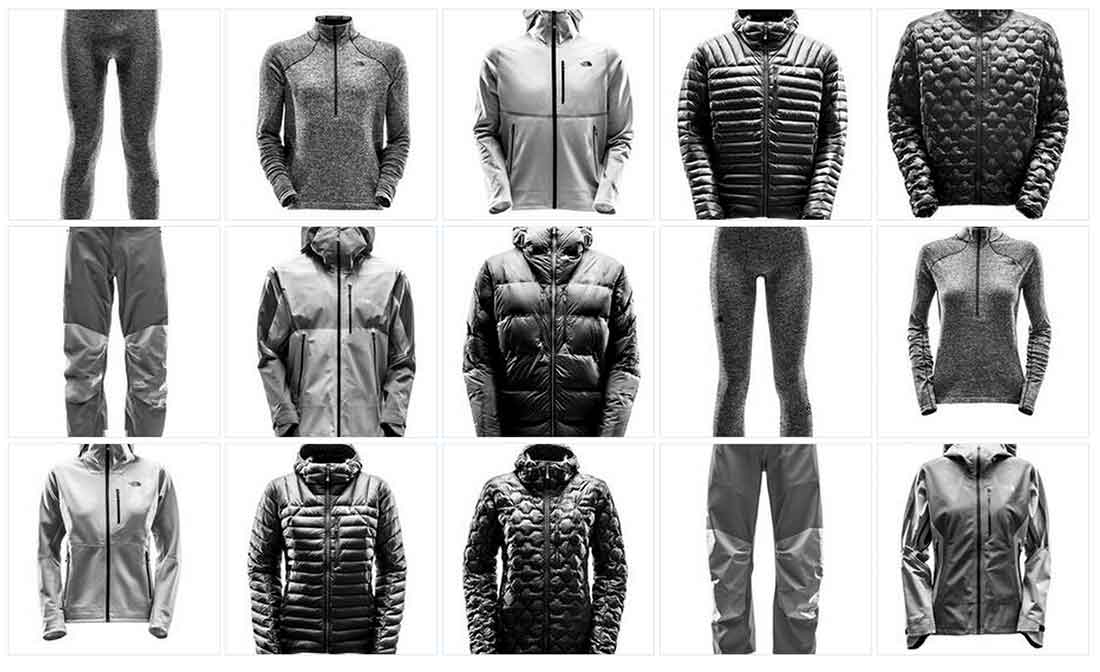[leadin]In Nepal last winter, after failing to summit a frigid 6,400-meter peak, Conrad Anker stumbled onto a massive pillar of ice. The renowned mountaineer was with Renan Ozturk, a regular partner on similar far-flung and cold expeditions.[/leadin]

The pair had traveled to the Himalaya to test gear and identify final design tweaks to a line of top-secret apparel and outerwear from The North Face.
Anker had just six ice screws, barely enough for the climb overhead. But wracked with a case of “vertical jones,” as he put it, the pair roped up and started to climb. The ice pillar shot skyscraper-like into the air, and Anker and Ozturk ascended cloaked in monochrome suits, grey jackets of fused fabrics and layers underneath.
Next month, the kit of clothing — including base layers, mids, jackets, and shell pants, all made exclusively for climbing — comes to market as The North Face’s 2015 Summit Series Collection. A rebirth of the sub-brand (Summit Series had no 2014 line), the company has focused and refined, chopping nearly 75 items from the line and giving buyers just one option of each top-end apparel and outerwear offering.

Climber’s ‘Kit’

Brand Reboot

Subdued Color Scheme

High-Tech Hardshell
Climbing-Specific Features

Limited Release
The North Face - Summit Series 2015
- Summit L1 Top (Base Layer) – $125
- Summit L1 Pant (Base Layer) – $125
- Summit L2 Jacket – $250
- Summit L3 Jacket – $350
- Summit L4 Jacket – $300
- Summit L5 Shell Jacket – $600
- Summit L5 Shell Pant – $450
- Summit L6 Jacket – $500









